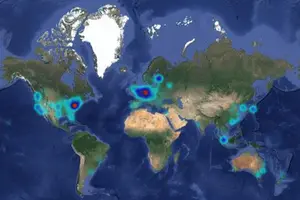Original Title: Making Ethereum alignment legible
Author: Vitalik
Translation: Scof, ChainCatcher
In the Ethereum ecosystem, alignment is one of the most important governance challenges—or, more precisely, the integration of decentralization and cooperation. The strength of this ecosystem lies in the wide range of individuals and organizations—client teams, researchers, layer 2 network teams, application developers, local community groups—all working towards their respective visions of what Ethereum could become. The main challenge is to ensure that all projects collectively build an Ethereum ecosystem, rather than 138 incompatible territories.
To address this challenge, many in the Ethereum ecosystem have proposed the concept of "Ethereum alignment." This may include alignment of values (e.g., open source, minimizing centralization, supporting public goods), technical alignment (e.g., collaboration with standards across the ecosystem), and economic alignment (e.g., using ETH as a token where possible). However, this concept has historically been poorly defined, leading to the risk of social control: if alignment means having the right friends, then "alignment" as a concept has failed.
To address this issue, I believe that the concept of alignment should be made clearer by breaking it down into specific attributes that can be represented by specific metrics. Everyone's list will be different, and the metrics will inevitably change over time. However, I believe we already have some solid starting points.

Open Source - This is valuable for two reasons: (i) code can be audited for security and, more importantly, (ii) reduces the risk of proprietary lock-in and allows third parties to improve without permission. Not every part of every application needs to be fully open source, but the core infrastructure components that the ecosystem relies on absolutely should be. The gold standard here is the FSF Free Software Definition and the OSI Open Source Definition.
Open Standards - Strive for interoperability with the Ethereum ecosystem and build on open standards, whether existing (e.g., ERC-20, ERC-1271…) or in development (e.g., account abstraction, cross-L2 transfers, L1 and L2 light client proofs, upcoming address format standards). If you want to introduce a new feature and existing standards don't serve well, collaborate to write a new ERC. Applications and wallets can be rated based on the number of ERCs they are compatible with.
Decentralization and Security - Avoid trust points, minimize attack surface, and minimize reliance on centralized infrastructure. Natural metrics are (i) The walkaway test: if your team and servers disappeared tomorrow, could your application still function, and (ii) Internal attack test: if your team itself tried to attack the system, how much damage would it do, and how much harm would you cause? An important formalization is the L2beat aggregation phase.
Positive Sum
Towards Ethereum - The success of the project should benefit the entire Ethereum community (e.g., ETH holders, Ethereum users), even if they are not part of the project's own ecosystem. Specific examples include using ETH as a token (thus contributing to its network effects), contributing to open-source technology, and committing to donate a certain proportion of tokens or revenue to public goods in the Ethereum ecosystem.
Towards the Wider World - Ethereum aims to make the world a freer, more open place, enabling new forms of ownership and cooperation, and making positive contributions to the major challenges facing humanity. Does your project achieve this? Examples include applications that bring sustainable value to a wider audience (e.g., financial inclusivity), donating a certain proportion to public goods outside of Ethereum, and building practical technologies that go beyond cryptocurrencies (e.g., funding mechanisms, general-purpose computing security) that are actually used in these environments.

Ethereum node map, source: ethernodes.org
Clearly, the above standards do not apply to every project. The metrics applicable to layer 2 networks (L2s), wallets, decentralized social media applications, etc., will vary widely. Different metrics may also change in priority: two years ago, using "training rounds" was acceptable for Rollups because they were still in the "early stages"; today, we need to reach at least phase one as soon as possible. Today, the most obvious positive sum metric is the commitment to donate a certain proportion of tokens, and more and more projects are doing this; in the future, we may also find clear metrics for other aspects of positive sum.
My ideal goal is to see more entities like L2beat emerge to track how well projects are meeting the above standards and other community-proposed standards. Projects should not compete to make the right friends, but should compete to remain as aligned as possible based on clear and understandable standards. The Ethereum Foundation should maintain a certain distance in this regard: we fund L2beat, but we should not become L2beat. Creating the next L2beat is itself a permissionless process.
This will also provide a clearer way for the Ethereum Foundation and other organizations (and individuals) that want to remain neutral while supporting and participating in the ecosystem to decide which projects to support and use. Each organization and individual can determine, based on their judgment, which standards they care most about and partly based on which projects best meet those standards. This makes the Ethereum Foundation and everyone else easier to be part of the incentive to make projects more aligned.
Elite management can only be achieved when the definition of "merit" is clear; otherwise, you have a (potentially exclusive and zero-sum) social game. For concerns about "who watches the watchers," the best solution is not to place all hopes on ensuring that all influential people are angels, but through proven techniques such as decentralization. Dashboard organizations like L2beat, block explorers, and other ecosystem monitors are excellent examples of this principle at work in today's Ethereum ecosystem. If we can do more to make different aspects of alignment clearer, while not concentrating on a single "overseer," we can make this concept more effective, as well as fair and inclusive, just as the Ethereum ecosystem aspires to be.
免责声明:本文章仅代表作者个人观点,不代表本平台的立场和观点。本文章仅供信息分享,不构成对任何人的任何投资建议。用户与作者之间的任何争议,与本平台无关。如网页中刊载的文章或图片涉及侵权,请提供相关的权利证明和身份证明发送邮件到support@aicoin.com,本平台相关工作人员将会进行核查。




